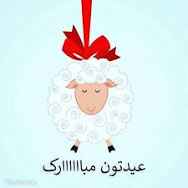Celebrating Eid al-Adha in Afghanistan

Eid al-Adha in Afghanistan is accompanied by special ceremonies and rituals. On this day, people sacrifice animals, distribute meat to families, friends and the needy, and attend mosques to offer Eid prayers. Families also go sightseeing, wear new clothes, and prepare traditional foods. This day is an opportunity to renew social connections and strengthen solidarity between people in society.
Celebrating Eid al-Adha in the Taliban regime
The celebration of Eid al-Adha under the Taliban regime in Afghanistan has faced changes compared to previous years. The Taliban attach special importance to the implementation of Islamic ceremonies and emphasize strict observance of Sharia principles and laws.
Some of the changes and features of celebrating Eid al-Adha under the Taliban regime are:
-
More strict control over sacrifices: The Taliban have more control over the observance of Sharia principles in animal sacrifices and may apply stricter measures in this regard.
-
Eid prayer ceremony: Eid al-Adha prayer is performed with an emphasis on observing Islamic principles and the large presence of people in mosques and public places. The Taliban may provide security for these ceremonies.
-
Distribution of sacrificial meat: The emphasis on the distribution of sacrificial meat among the needy and deserving people has increased and the monitoring of this process has also increased.
-
Social Restrictions: Depending on security conditions and Taliban policies, restrictions may be imposed on celebrations and public events.
Despite these changes, Eid al-Adha is still celebrated as one of the most important Islamic holidays in Afghanistan, and people follow the relevant customs.
Afghan customs and traditions in Eid al-Adha
Eid al-Adha in Afghanistan is associated with a set of special customs and traditions that may have differences in different regions of the country. Some of these customs are:
-
Eid prayer: People go to mosques and public places on the morning of Eid al-Adha to offer Eid prayer in congregation. After the prayer, a sermon about the importance of Eid al-Adha and animal sacrifice is presented by the imam of the congregation.
-
Sacrifice: One of the most important customs of Eid al-Adha is to sacrifice animals such as sheep, goats, cows or camels. The meat of the sacrifice is divided into three parts: one part for the family, one part for friends and relatives, and one part for the needy.
-
Wearing new clothes: People wear new or clean clothes on the occasion of Eid al-Adha. This custom shows respect for this holy day.
-
Seeing and visiting: Families and friends go to see and visit each other, congratulate Eid and spend time together.
-
Cooking special dishes: On this day, Afghan women prepare traditional and special dishes such as Qabi Pilu, Mento, Bolani, and Ashek. These dishes are shared among the family and guests.
-
Distribution of charity: People help the needy and the poor on this day. Distributing the sacrificed meat equally among the needy people is one of these aids.
-
Local Rituals: In some areas, special local rituals and celebrations are held which include folk music, traditional dances and cultural performances.
These customs and traditions show solidarity and unity between the people of Afghanistan and respect for religious and cultural values.